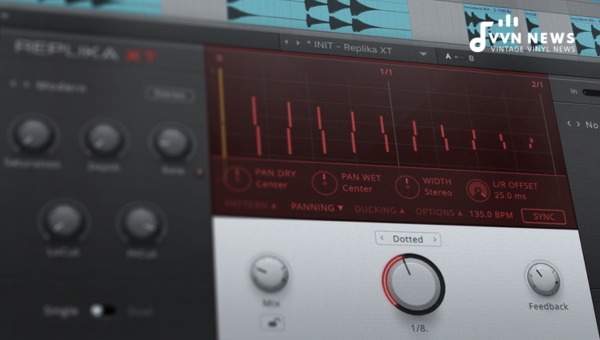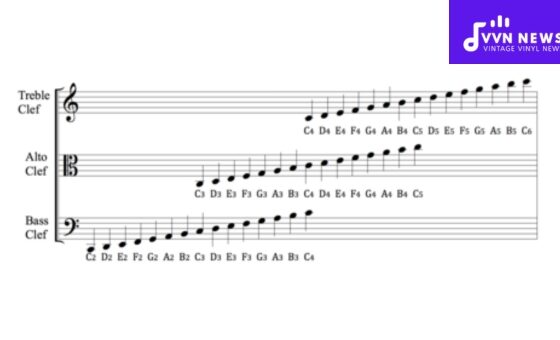Audio engineering is an intricate art and science where every effect has the potential to make or break the overall sound.
This is undoubtedly true for time-based effects like delay and echo. Misused they can result in a confusing, dissonant mix, but when applied correctly, these effects can enhance a song incredibly.
In today’s blog post Delay & Echo: A Guide to Using Time-Based Audio Effects, I intend to discuss these unique elements of audio editing in detail.
Whether you’re an amateur artist tinkering in your basement or a professional sound engineer working with state-of-the-art studio gear, understanding delay, and echo can prove crucial in shaping your desired soundscape.
Audio effects such as delay and echo add spatial dimension and depth to your tracks.
They give life to an otherwise flat recording by mimicking the natural reverberations heard in actual physical spaces. Isn’t it fascinating how we use these techniques today that emulate our audible reality?
However, with their power comes responsibility; they are not just ‘set and forget’ tools but demand precision and understanding.
Keep reading as I unveil some standard practices around using delay and echo – two of the most powerful tools in your audio engineering arsenal.
What are Delay Effects, and How Do They Work?
In audio engineering, delay is a term that refers to a time-based audio effect employed to create copies of an audio signal that trail off into the background.
It replicates an incoming sound and then plays it back after some time. This interval can range from fractions of a second to more extended periods, creating different impacts on the track.
Let’s delve further into its workings. The signal passes into the ‘delay line,’ where an internal buffer stores the audio data for a specified time before reproducing it.
The output from this delay line can get either mixed with the original (dry) signal or used as an input for additional processing.
The delayed signals are typically manipulated in their volume (Level) and repeat (Feedback), amongst other parameters.
One key thing about delay is that at short durations, like 20-30 milliseconds, it doesn’t echo but creates specific modulation effects such as chorus and flanging.
Delay can be your tool for everything from creating a sense of depth or space in your mix to simulating room sounds and establishing rhythmic patterns.
Understanding its workings will help you utilize this potent tool more effectively.
Also Read: What Is Proximity Effect? [Understand Its Impact On Audio Quality]
Purpose of Incorporating Delay into Music Production
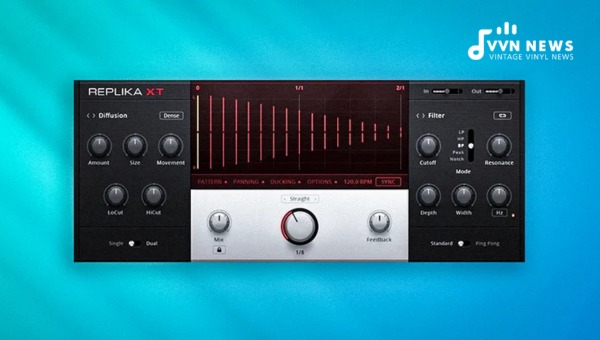
The artistic use of delay in music production breathes life into a recording by creating spacing and depth, reproducing the natural echoes we experience in real-world environments.
Essentially, delay can enhance your track’s auditory presence by increasing its complexity and tonal interest.
Creating Space: Delay is frequently used to make a recording feel situated within an actual physical location. By subtly manipulating its parameters and timing it with the tempo, you can emulate the echoes of different environments – the intimate reflections of a small room or the grand reverberations of a cathedral.
Addition of Texture: Allowing some aspects of your track to ‘echo’ adds an intriguing layer to your piece, making it more appealing to listeners. The delayed repetition enriches musical phrases, enhancing melodies just as a painter would utilize shades to bring depth to their canvas.
Doubling Effect: Musicians often use the delay as an alternative to tracking vocals or instruments multiple times. Applying a very short delay to a vocal track, for instance, may make the vocalist sound as if they’re singing in unison with themselves.
Harmonic content: Extend any melodic line using longer delays with increased feedback settings. This builds complex harmonic content that increases the tonal richness and song drama.
Think of delay effects as spices enhancing the song’s mood; without them, music could taste relatively bland.
It’s essential to know what these effects do and when and how effectively integrating them supports your sonic vision.
The World of Time-Based Effects: Delay, Echo, and Reverb
Getting more intimate with audio effects starts with understanding what separates one from another.
Delay, echo, and reverb are different yet commonly mistaken as each other due to their similarities being time-based effects.
Let’s highlight them and ascertain how these three brothers differ.
Short Delay Vs Echo
A short delay is typically between 1-30ms and is often imperceptible to the human ear as an echo.
As such, it’s widely used to create doubling or slight detuning effects, enabling one voice or instrument to sound like multiple when applied appropriately.
On the other hand, when delay times reach approximately 50ms or longer, we perceive them as an echo – a distinct replicate of the original sound that reduces in volume with each subsequent repetition.
Audio engineers exploit echoes to add a sense of depth and space in the mix, which piques the interest of listeners.
Echo Vs Reverb
Moving further up, we encounter reverb, another form of audio reflection taken to an extreme where individual echoes merge into a wash or atmospheric tail, lasting anywhere from less than a second to several seconds.
Unlike echo – which repeats precisely what you put into it – reverb creates the ambiance reflecting numerous times off multiple surfaces before it hits your ears.
Delay is essentially just a timed repetition of sounds; Echo shares this trait but with extended time intervals, rendering it distinctly audible.
Reverb contains a multitude of echoes arranged in such complexity that it paints a continuous picture showcasing an acoustic environment.
Employing one, or better, a layered combination of all three intelligently can deliver genuinely immersive audio experiences.
Each effect has its parameters and controls to shape your desired sound further.
Whether you’re going for that intimate ‘close room’ feeling or the expansive reverb of a cathedral, understanding these differences and functionality forms the foundation of mastering time-based effects.
Also Read: 17 Best Patchbay For Studio & Live Audio [Organize Your Gear]
Types of delay effects
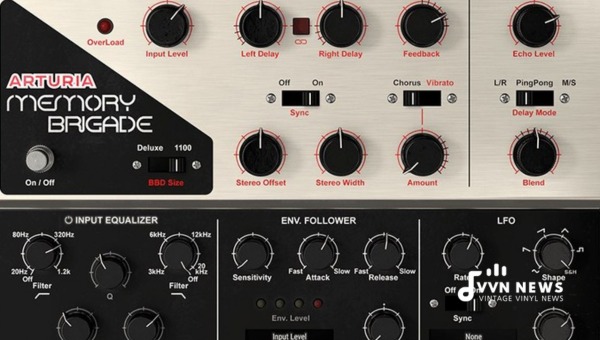
Let’s journey into the heart of various delay effects. As each delay type possesses unique characteristics, understanding these subtle variations can empower music producers to create a distinctive sonic texture.
Phaser
The phaser is an intriguing time-based effect that creates a sweeping “whoosh” by duplicating the signal, altering its phase, and then combining it again with the original signal.
The process leads to peaks and troughs in the frequency spectrum that move up and down. This generates a warm psychedelic effect popularly in rock and pop recordings since the 60s.
Key parameters:
- Rate: This governs how fast phase shifting occurs.
- Depth: It determines the intensity of phase shifting.
- Feedback: It adds resonance to the phasing effect by feeding the output back into the input.
Phasers are commonly applied on guitars and keyboards to add an appealing texture but can also be used subtly on vocal tracks or drums to introduce movement.
Flangers
Flanging is often confused with phasing due to their similarity. Both use duplicate signals and apply time delay but differ in in-depth control and regen (feedback) settings.
Flangers produce a more substantial comb filtering effect known for its distinctive ‘jet engine’ swooshing sound.
Key parameters:
- Rate/Speed: Controls how rapidly flanging occurs.
- Depth: Determines how drastically delayed signals vary over time.
- Mix/Wet-Dry: Manages the processed (wet) signal ratio to the raw (dry) signal.
- Feedback/Regen: Feeds signal from output back into processor input for an extra accentuated flange.
Flange effects are versatile, enhancing solos or creating thunderous drum sounds when experimented with higher feedback levels.
Chorus
The chorus is an enchanting delay effect replicating the natural phenomenon experienced when multiple voices sing harmoniously.
It duplicates the audio signal, subtly detunes and delays it, and then mixes it with the original sound.
Key parameters:
- Rate/Speed: Manages how quickly pitch modulation occurs.
- Depth: Determines the extent of pitch modulation.
- Mix/Wet-Dry: Manages the balance between processed and raw signals.
So there you have it: a concise overview of different delay types and how they can be effectively used as tools for creative expression in your recordings.
Armed with this knowledge, you can mix and match these effects to create a unique landscape of sound that distinguishes your music from the rest.
Also Read: 19 Best Audio Interfaces For Home & Studio Recording 2025
Delay Effects Parameters
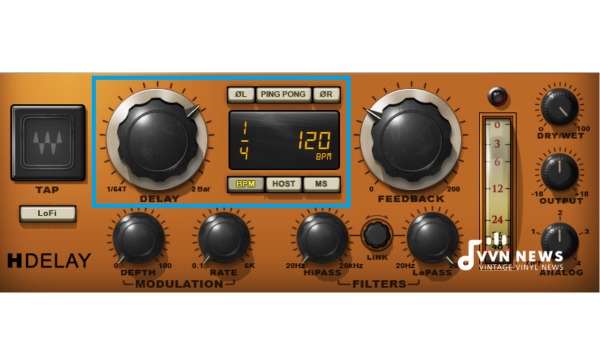
As with any aspect of music production, knowing your tools is pivotal. When using delay, various settings control the nature and impact of the effect.
Let’s delve deep into some essential parameters that determine to what extent delay affects your audio.
Tempo or BPM
Also known as Beats Per Minute, the tempo sets you on the right timing path for delays to match rhythmically with your music.
Various songs come with different tempos; hence, this parameter allows you to lock your delay effect in sync with any track you are working on.
Generally, using BPM-based delay times rather than milliseconds is a good idea.
Also, experiment with quarter-note and eighth-note delays – playing around with these settings will provide you with a balanced series of echoes that dissolve smoothly into your mix.
Tap Tempo
This handy feature provides an alternative way to set the delay time that syncs perfectly with the music’s rhythm.
By manually tapping out a beat by clicking a button or tapping a key, one can define the length of time between repeats quite organically.
Tap tempo settings take precedence over synced tempo (BPM) settings, ensuring only one is active at a given point.
Dry/Wet or Mix
This parameter determines how much of the processed (wet) signal is blended with the original (dry) signal.
Typically measured as a percentage – 0% would mean no effect used while 100% would indicate only effect-laden sound – tweaking this control can significantly influence the delay’s subtlety or prominence in your mix.
As thrilling as it seems to crank up effects, be cautious while increasing this parameter beyond 50%.
A high wet value might result in muddying your mix instead of enriching it.
Delay Time
The ‘heart’ of most delay units – delay time primarily controls the duration between original notes and their echoes.
Adjusting this parameter can lead to outcomes spanning from rhythmic bounce to psychedelic ambiance, thus offering substantial creative liberty.
Don’t constrain yourself with synchronized delays – venture into unsynced territories as well – unquantized echoes can result in exciting rhythmic patterns and textures.
Feedback
Feedback is responsible for controlling the number of repetitions or ‘echoes.’ Higher feedback values yield more repeats, ultimately creating more prolonged delay effects.
It’s an excellent tool for creating ambient soundscapes but requires careful handling – too much feedback could lead to ever-increasing loops overpowering your mix.
Familiarity with these parameters will drastically improve your understanding in wielding delay effectively.
Music production is profoundly subjective and intuitive; hence, these guidelines are balanced best with personal experimentation and trial-and-error – The driving force behind creativity.
Also Read: Haas Effect [The Powerful Tool To Upgrade Your Audio Mix]
Tips for Achieving Different Effects with Delay
Understanding the art of applying delay effects in music production can give your sound a professional touch.
Let’s explore four popular delay techniques that can add dimension to your mix.
Slap-Back Delay
Slap-back delay or ‘echo’ is a single, distinct repeat of the original sound at a short interval of around 40-120 milliseconds long.
Known to be used extensively by artists like Elvis Presley and The Beatles, this delay is most commonly applied to vocals and guitars to add a thick, ‘slapped’ sound.
Steps to create Slap-Back Delay:
- Open your DAW’s delay plugin on the specific track you wish to apply slap-back delay.
- Set a short delay time at around 40 – 120 milliseconds.
- Adjust the feedback parameter till there is only one repeated echo.
- Use the mix function to balance between the wet (affected) and dry (original) signals until you achieve your desired texture.
A pre-delay time of less than 50ms typically binds the wet signal so closely to the dry one that our brains perceive them as one sound!
Doubling Delay
Doubling delay, often called ‘double tracking,’ aims to create an illusion of multiple sources producing the same sound.
This technique thickens vocals, giving them more presence in the mix by adding body and depth.
Steps to create Doubling Delay:
- Apply your DAW’s delay effect to their tracks, typically vocals or lead instruments.
- Use short delay times of about 15 – 35ms plus higher feedback levels, unlike slap-back style.
- No separate echo must be audible; everything should blend seamlessly.
This is essentially similar to multi-track recording, where an artist records themselves several times over saying or playing the same part.
Ping-Pong Delay
A ping-pong delay gives an impression of sound bouncing from left to right like a ball in a ping-pong match, offering an immersive and engaging listening experience.
Steps to create Ping-Pong Delay:
- Most DAWs have built-in ‘Stereo Delay’ or ‘Ping-Pong Delay’ plugins.
- Choose more extended delay settings, ranging from 100 – 800ms, depending on the song’s BPM.
- Balance the feedback to avoid overwhelming repeats.
- Modify panning levels to taste, creating effects from subtle width enhancements to dramatic stereo envelopes.
This style is widely beneficial in electronic music genres and works excellent for ear-catching individual elements or transitional FX.
Stereo Widening-Thickening Delay
Stereo widening using delay introduces extra stereo information into your mix without necessarily creating a noticeable echo effect but rather increasing the sound’s thickness.’
Steps to create Stereo Widening-Thickening Delay:
- Set up a simple stereo delay on your mixer channel or group bus.
- Use quick delay timings between 10 – 30ms with subtle feedback; too much can cause an unwanted phasing effect.
- Vary one side’s timing slightly more than the other for extra stereo depth.
- Your desired sound should feel widened without noticing any discernible echo.
This technique works wonders with background vocals or pad synths where you want those elements to spread out wide in the stereo field without stepping on critical factors that require more focus in the mix, like lead vocals or kick drum.
By diving deeper into these techniques, you’ll find that delay adds many possibilities for creativity and sonic enhancement.
Also Read: Spring Reverb [Guide To This Special Audio Effect]
Best Delay Plugins
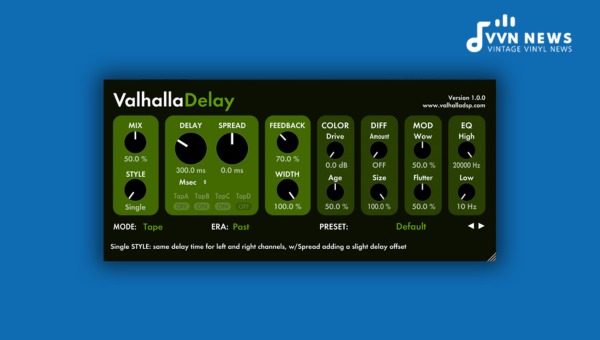
In audio production, plugins have become some of the most powerful tools. Sound designing and music production would be so much more laborious without them.
Here, we will discuss some of the best delay plugins that can drastically improve and finesse your sound displays.
Soundtoys EchoBoy
Perhaps one of the most versatile time-based effects plugins is Soundtoys’ EchoBoy.
This unit offers a wide array of delay types, allowing you to shape sounds precisely.
Features:
- Thirty unique echo styles.
- Variety of chorus and pitch modulation effects.
- Feedback controls with low-cut and high-cut filters.
EchoBoy is not just a delay plugin; it can also act as a saturation tool. You can push the drives on the vintage echo models to get some beautiful saturation; this, coupled with the array of different ‘echo styles’ at your disposal—each styled after other analog echo boxes—allows you to emulate various vintage vibes.
Native Instruments Replika XT
Native Instruments Replika XT is another top-performing delay plugin in versatility and user-friendly interface.
Features:
- Five deeply modeled delay modes
- Advanced options like diffusion, feedback damping, pitch shifting
- Modern and vintage digital hardware delays
The fascinating thing about Replika XT is that it goes beyond simply providing excellent sounding delays; it offers an incredibly intuitive interface, making it easy for novices in effects processing while other more advanced controls allow for sophisticated sound manipulation.
FabFilter Timeless 3
With its sleek design and robust functions, FabFilter’s Timeless 3 gives its users comprehensive control over creating echo and reverb effects.
Features:
- Two delay lines (5 ms to 5 sec) with host tempo sync and panning
- Interaction with filters, feedback, or modulation is possible.
- Over 300 presets
Timeless 3 could be considered a hybrid tool, doubling as a reverb unit that can emulate various spaces. This added functionality, alongside its top-quality delays, makes it an excellent asset for any music producer.
Eventide UltraTap
Eventide’s UltraTap is a robust, yet simple-to-use delay plugin that can transform your sound in ways you’ve never imagined.
Features:
- Vary from rhythmic delays, glitchy reverbs, and tuneful resonances.
- The knob adjusts, plus the ribbon controller offers flexibility.
- Provides up to 64 synchronized taps
UltraTap’s claim to fame lies in its ability to modulate multiple parameters simultaneously – a feature that makes it an ideal tool for sound design and experimental musicians.
Cherry Audio Stardust 201
The Cherry Audio’s Stardust 201. Though simplistic in design, Stardust marvels users with its sublime spatial effects, creating iconic sci-fi sounds purely from vintage hardware models.
Features:
- Simple one-knob Layout
- Mimicking classic tape echo devices.
- Integrated spring reverb emulation
Stardust 201’s delay line mimics the sound of classic tape echo units, delivering analog warmth while providing crisp digital precision, making it the perfect plug-in for recreating vintage tones.
The simplicity of its interface makes it easily manageable, even for beginners.
The right plugin can make all the difference when using time-based effects like delay and echo.
The options discussed above beautifully capture what a good delay plugin should offer.
They balance user-friendliness and complex sound design capability, allowing anyone from beginners to professionals to achieve the best possible results.
Also Read: 10 Tips For Soundproofing Your Subwoofer [Upgrade Your Audio Setup]
FAQs About Delay & Echo
What is the critical distinction between delay and echo?
Delay refers to sound reflections distinctly perceived as separate from the original sound. Echo, instead, is a type of delay effect where the repetitions gradually decrease in volume.
How can one effectively use delay effects in their mix?
Effective delay involves subtleness, improving dimensions and depth without making your mix sound repetitive or cluttered.
What is the ‘Slap-back Delay’ effect?
Slap-back Delay is a short, single-repeat delay effect often used to add body to vocals or lead instruments.
Can delay effects be overused or misused in a mix?
Too much delay can make a mix sound muddy or cluttered. Careful balancing and appropriate application are crucial to avoid overwhelming your track.
Do I need expensive equipment to utilize delay and echo effects?
Not at all. Many excellent digital plugins emulate classic analog delay units quite effectively and are affordable for home studios.
Conclusion
Understanding and utilizing delay and echo effects in your music production can drastically enhance your tracks’ overall depth and atmosphere.
With varieties of delay effects like chorus, flanger, and phaser at your disposal, the possibilities for creative expression are vast.
Remember that these tools can also double vocal or instrumental components, creating a rich complexity in sound.
Whether you’re fine-tuning the mix of a song or crafting a specific sonic atmosphere, these time-based effects should be part of your audio engineering toolkit.
